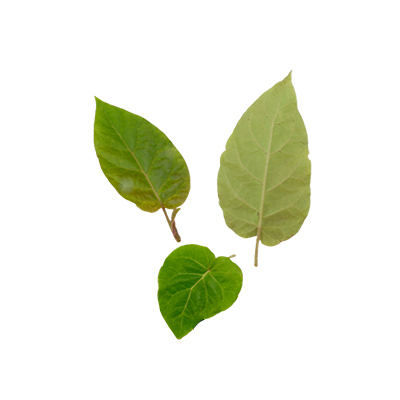Tamarillo
Solanum betaceum Cav.
Solanaceae
Location in our garden
Principal



Synonym
Cyphomandra betacea (Cav.) Sendtn.
Cyphomandra crassifolia Kuntze
Cyphomandra procera Wawra
Habitus
Shrubs. An evergreen, fast growing-short lived perennial shrub or small tree that grows 2-7 m tall.
Part Used
Leaves
Fruit
Growing Requirements
Full Sunshine
Need Shade
Habitat
Riverbanks
Forest
Terrestrial
Overview
Solanum betaceum is native to South Tropical America, more specifically from the Andean regions of Peru, Chile, Ecuador and Bolivia. By the end of the 19th century, it had reached Australia and New Zealand. Today, although currently grown on a commercial scale in USA (California), Ecuador, Colombia and Australia, New Zealand is the main producer and exporter. It is used to treat unspecified medicinal disorders, as animal food and a medicine and for dessert and food. The tree is harvested from the wild for its edible fruit, which is very popular in sub-tropical areas and the higher elevations of tropical zones. It also has medicinal uses and supplies dyestuff and tannins. Tamarillo has a range of nutrients including dietary fibers, polyphenols, vitamins C, A, B, and E, carotenoids, potassium and iron.
Vernacular Names
Tomate de La Paz (French), Pomodora arboreo (Italian), Tomate serrano (Spanish), Tomate-de-arvore (Portuguese), Baumtomate (German), Arvore do tomate (Brazil), Pepino de arbol (Colombia), Munyanya (Uganda), Marattakkali (Tamil-India), Makhua-thetton (Thai), Shu-fan-qie (Chinese).
Agroecology
Tamarillos can be found in dry soils at forest margins, open forests at medium to high elevations. They grow best at low elevations in the subtropics and medium to higher elevations in the tropics, where they can succeed at elevations up to 2,800 m. Grow best in areas where annual daytime temperatures are within the range 16-22 °C, but can tolerate 10-30 °C. It can be killed by temperatures of -2 °C or lower. Dislikes drought. Prefers a mean annual rainfall in the range 2,000-2,600 mm, but tolerate 600-4,000 mm. Succeeds in a sunny position in any well-drained soil. Prefers a light, mildly acid, fertile soil, with a pH in the range 6.3-7, tolerating 5.8-7.5.
Morphology
- Roots - shallow, spreading root system.
- Stem - bole is short, with thick lateral branches, densely puberulent with unbranched glandular and eglandular hairs.
- Leaves - musky, odorous, ovate, simple alternate leaves are large initially becoming smaller at later stages 10-35 cm long by 4-12 cm wide. They have a long petiole and are more or less heart-shaped at the base and pointed at the apex. The leaves are thin, softly hairy, with conspicuous coarse veins, pungent smelling.
- Flowers - borne in small, loose clusters near the branch tips, inflorescences 2.5-15 cm, (unbranched or) branched, with 10-50 flowers, the fragrant flowers (sweet scent), 1.25-2 cm wide, have 5 pale-pink or lavender, pointed lobes, 5 prominent yellow stamens, and green-purple calyx.
- Fruits - 4-10 x 3-5 cm, ellipsoidal or ovoid, obtuse or acute at apex, yellow to orange, red, or purple, often with darker longitudinal stripes, glabrous; stone cell aggregates present, many small seeds, mature 60-90 days after flowering.
- Seeds - 3-4 x 3.5-4 mm, flattened, densely pubescent.
Cultivation
- Generative propagation is by seed - usually germinates within 4 weeks at 15 °C, within 2 weeks at 25 °C. When they are large enough to handle, prick the seedlings out into individual pots and grow them on until large enough to plant out.
- Vegetative propagation is by cuttings.
- Seeds produce a high-branched, erect tree, while cuttings develop into a shorter, bushy plant with low-lying branches suitable for exposed, windy sites.
Chemical Constituents
Alkaloid, flavonoids, steroids, saponins, terpenoids, polysaccharides, phenolic compunds (rosmarinic and caffeoylquinic acids), carotenoids, and anthocyanins.
Traditional Medicinal Uses
- Warmed leaves are wrapped around the neck as a remedy for sore throat in Ecuador.
- The fruit pulp, after having been cooked in embers, is used as a poultice for inflamed tonsils in Colombia.
- The species was known as ‘vegetable mercury’ in Jamaica because of its presumed therapeutic value to the liver.
- It has antioxidative, antiproliferative, antinociceptive, antiinflammatory, allergenicity, and anti-obese properties.
Part Used
Reference Sources
- Fern, Ken.(2021). Useful Tropical Plants: Solanum betaceum. https://tropical.theferns.info/viewtropical.php?id=Solanum+betaceum, 17-06-2022.
- Flowers of India. (No date). Tree Tomato. http://www.flowersofindia.net/catalog/slides/Tree%20Tomato.html. 17-03-2022.
- Growables. (2021). Grow Florida Edibles: Tamarillo - Solanum betaceum. https://www.growables.org/information/TropicalFruit/tamarillo.htm. 17-06-2022.
- Kew Royal Botanic Gardens. (No date). Plants of the World Online: Solanum betaceum Cav.. https://powo.science.kew.org/taxon/urn:lsid:ipni.org:names:306169-2#synonyms. 17-06-2022.
- ScienceDirect. (2022). Solanum Betaceum. https://www.sciencedirect.com/topics/agricultural-and-biological-sciences/solanum-betaceum. 17-06-2022.
- World Flora Online. (2022). Solanum betaceum Cav.. http://www.worldfloraonline.org/taxon/wfo-0001026534. 17-06-2022.

